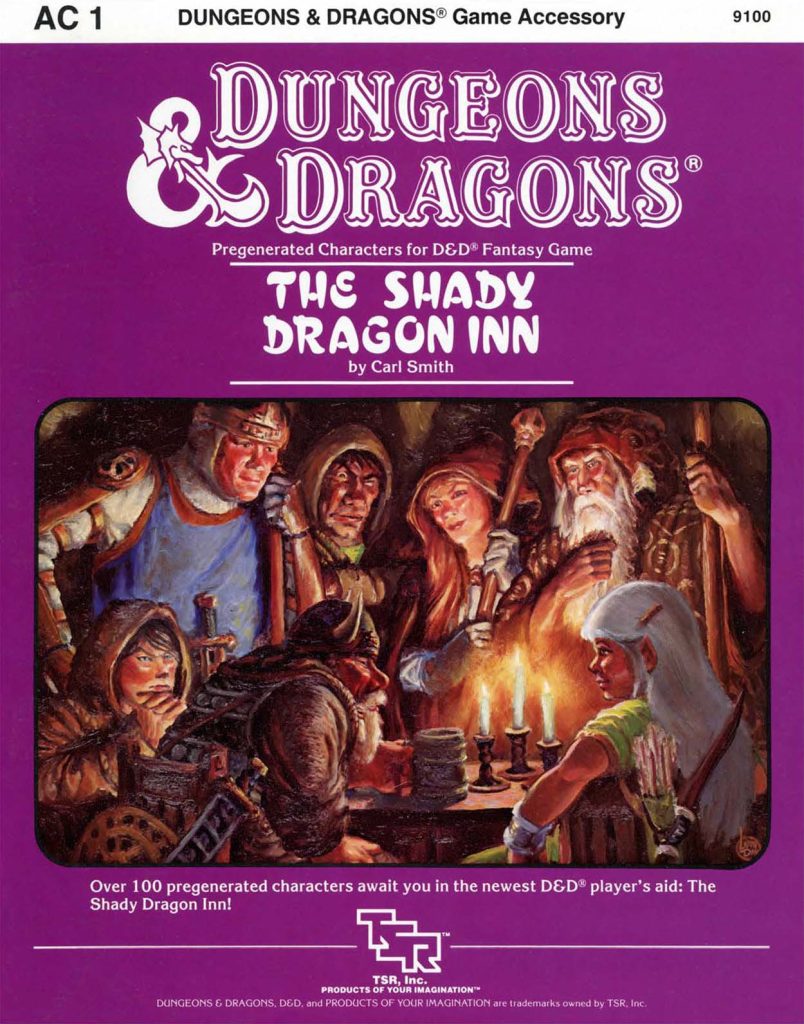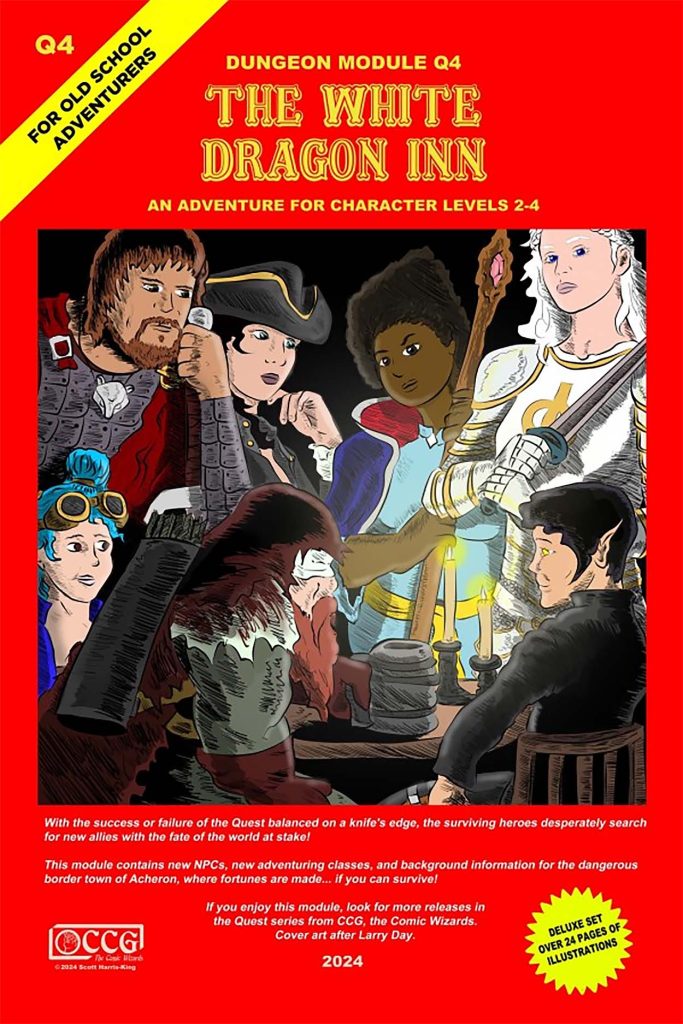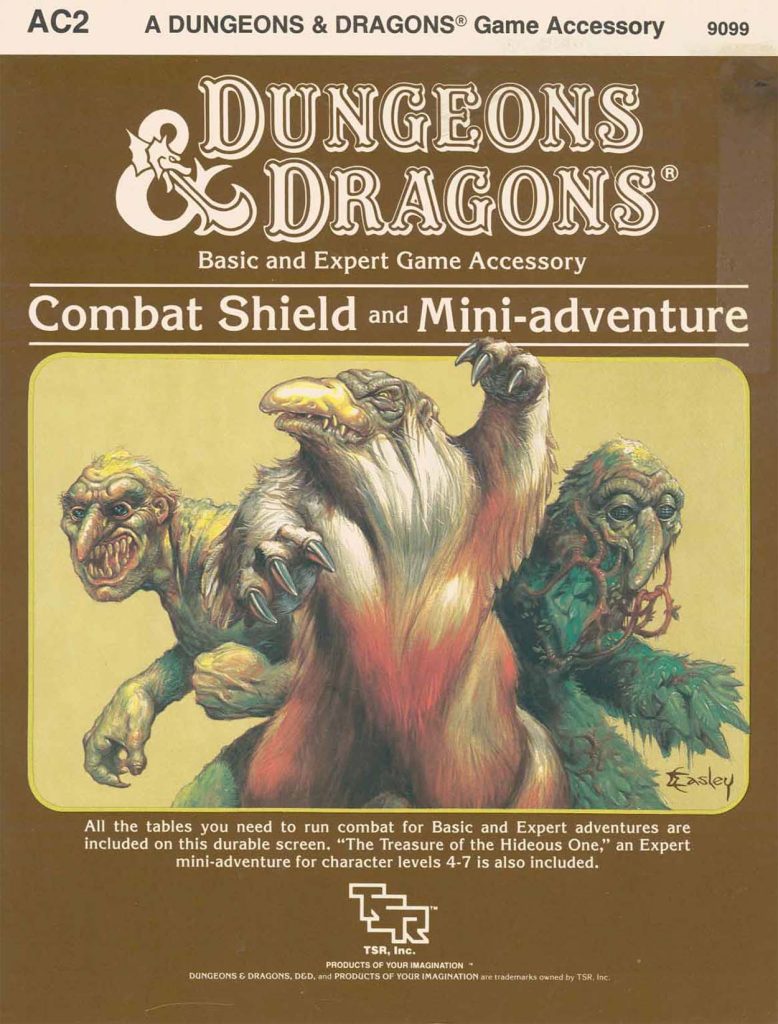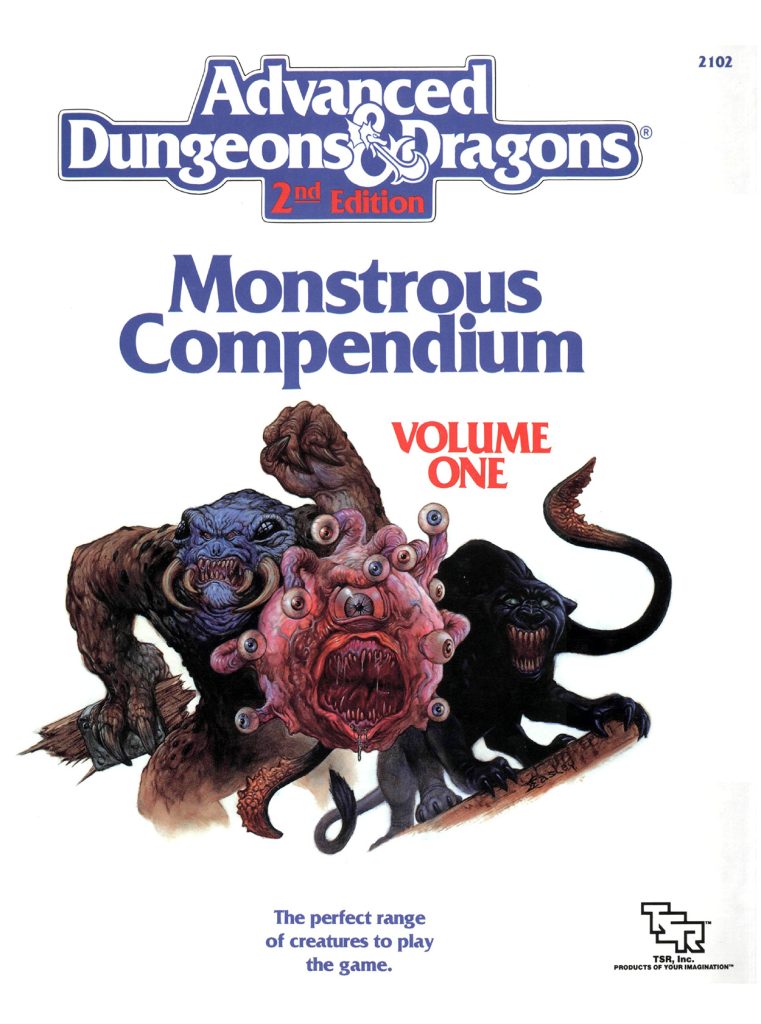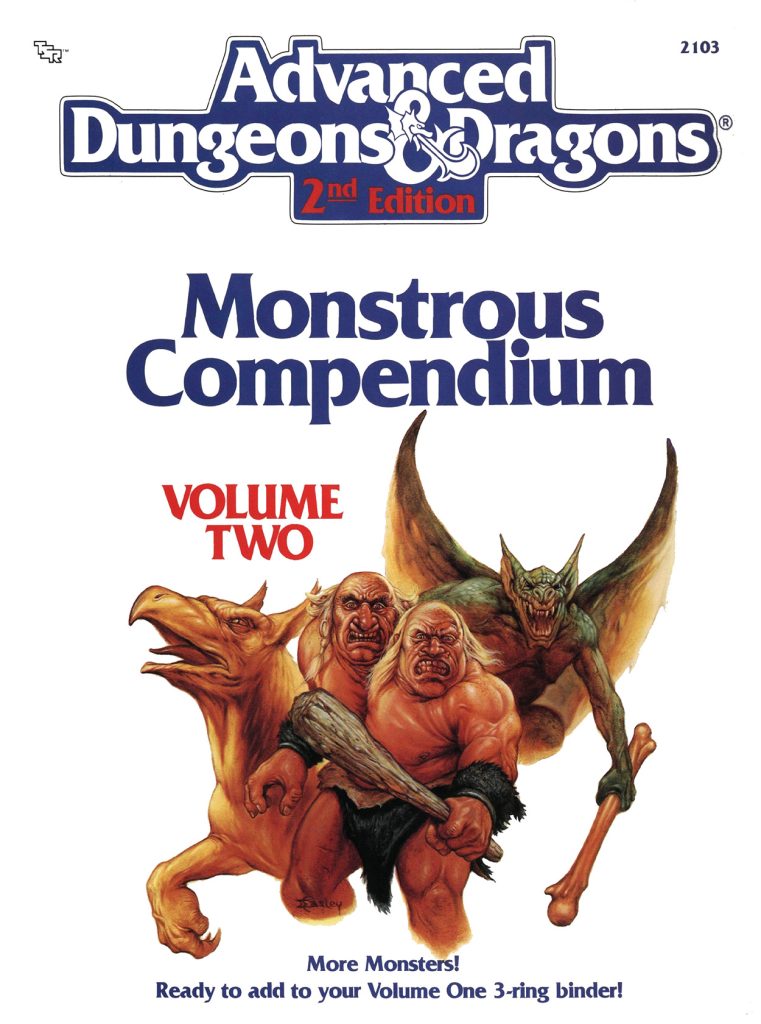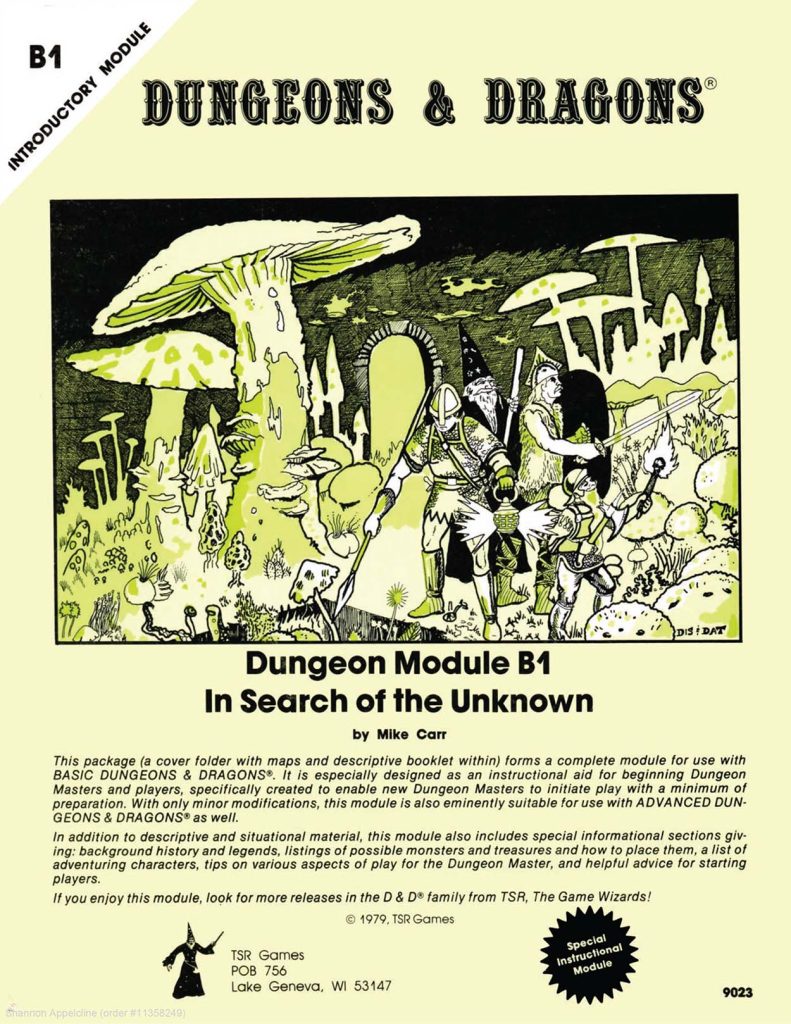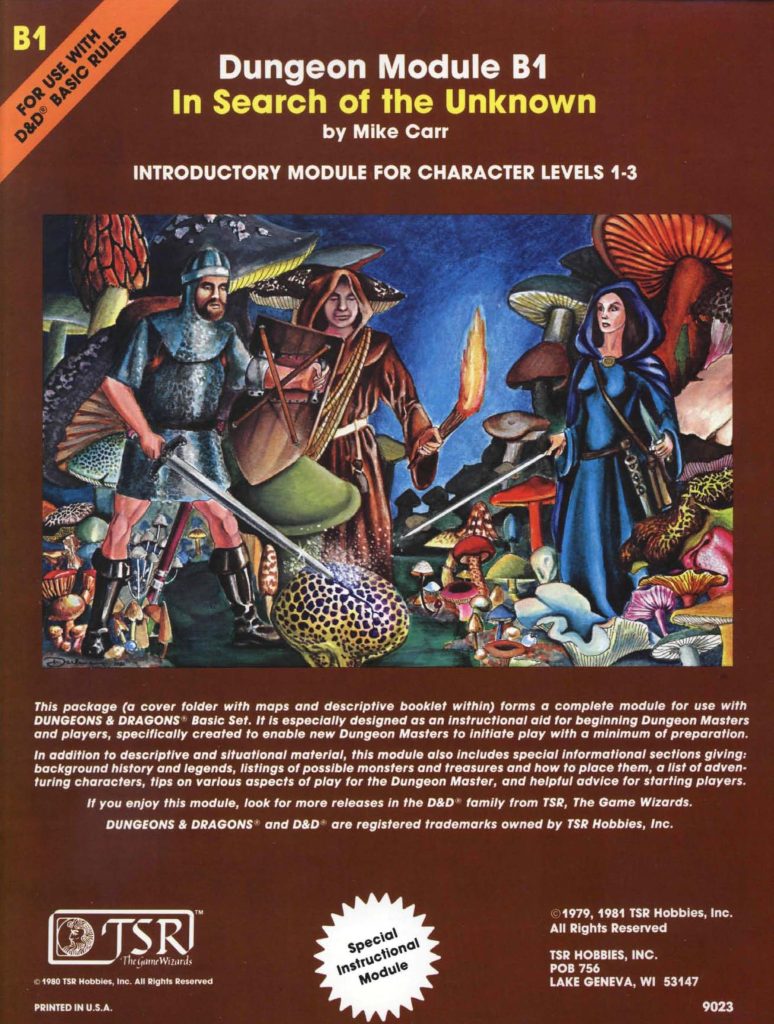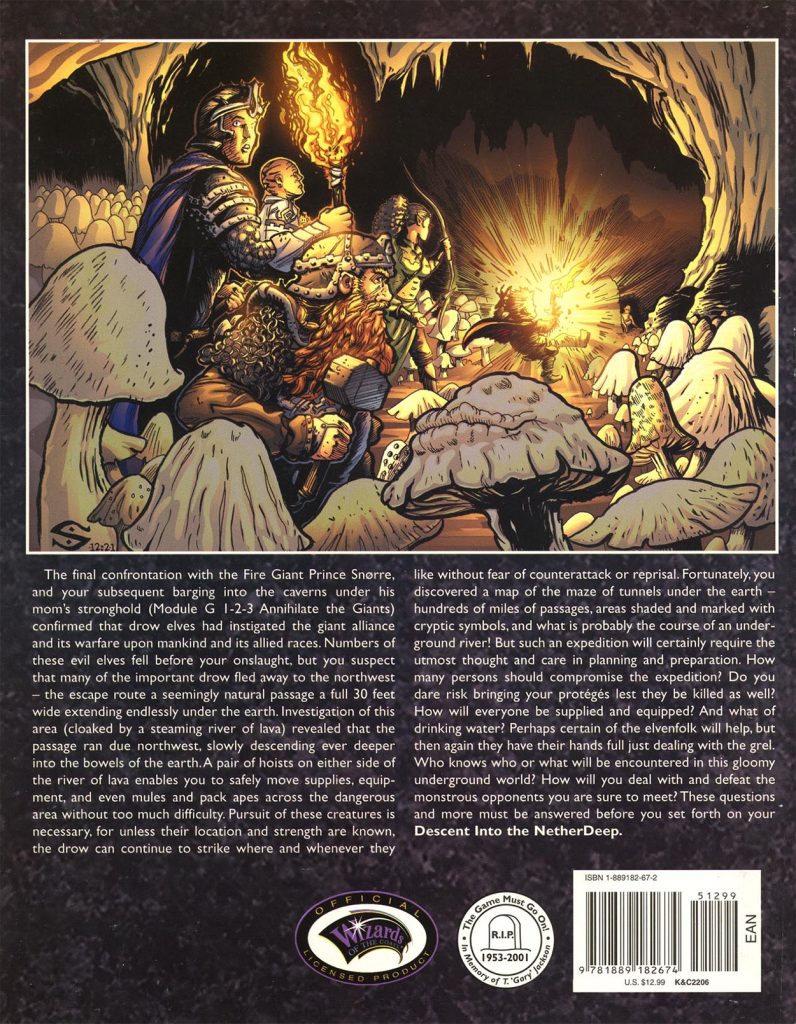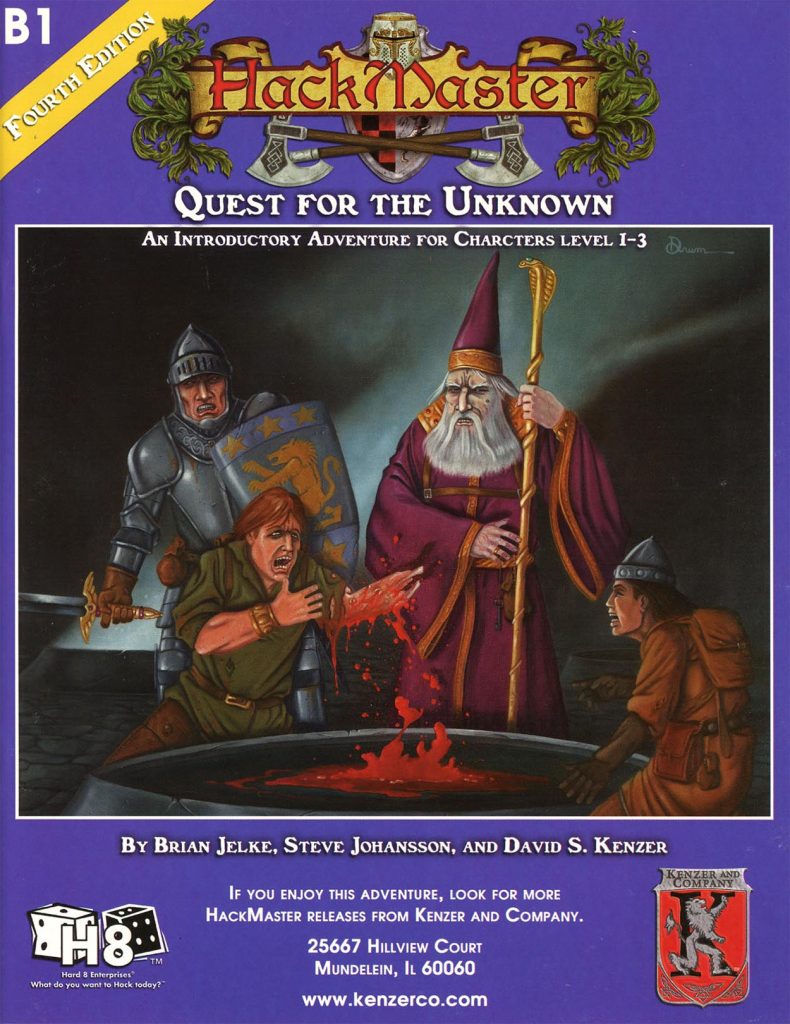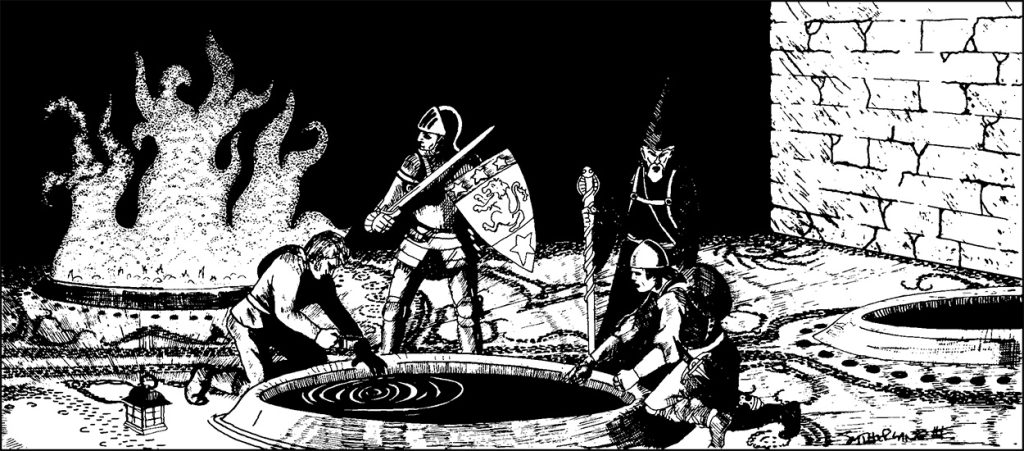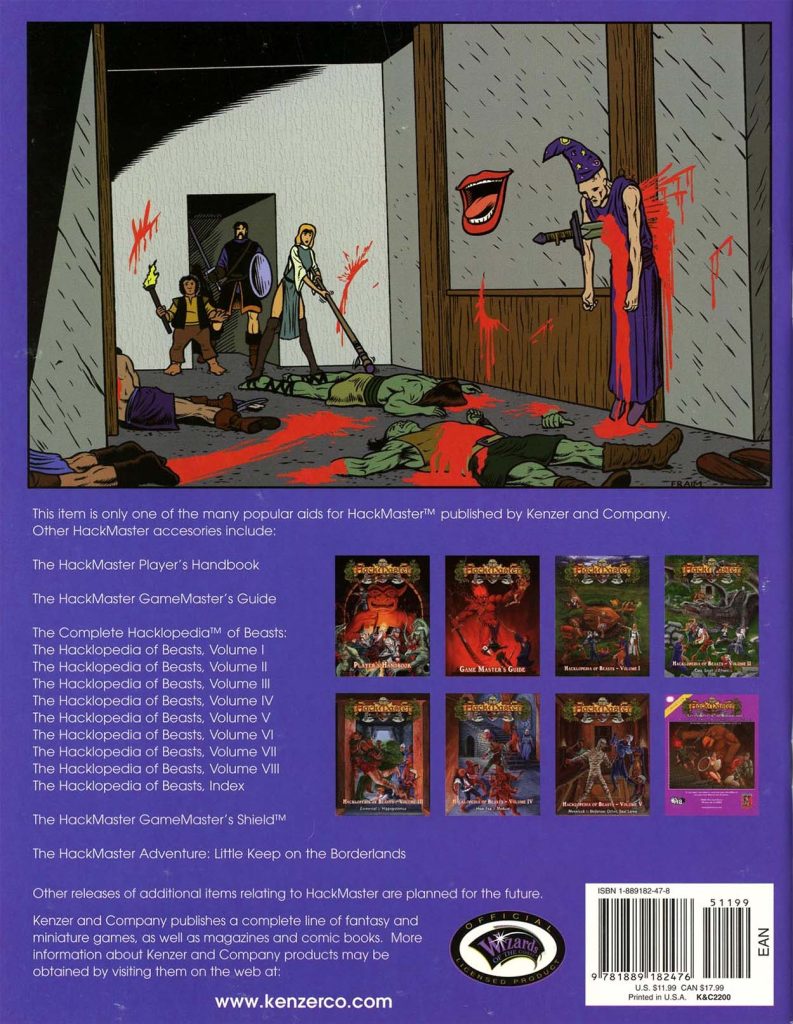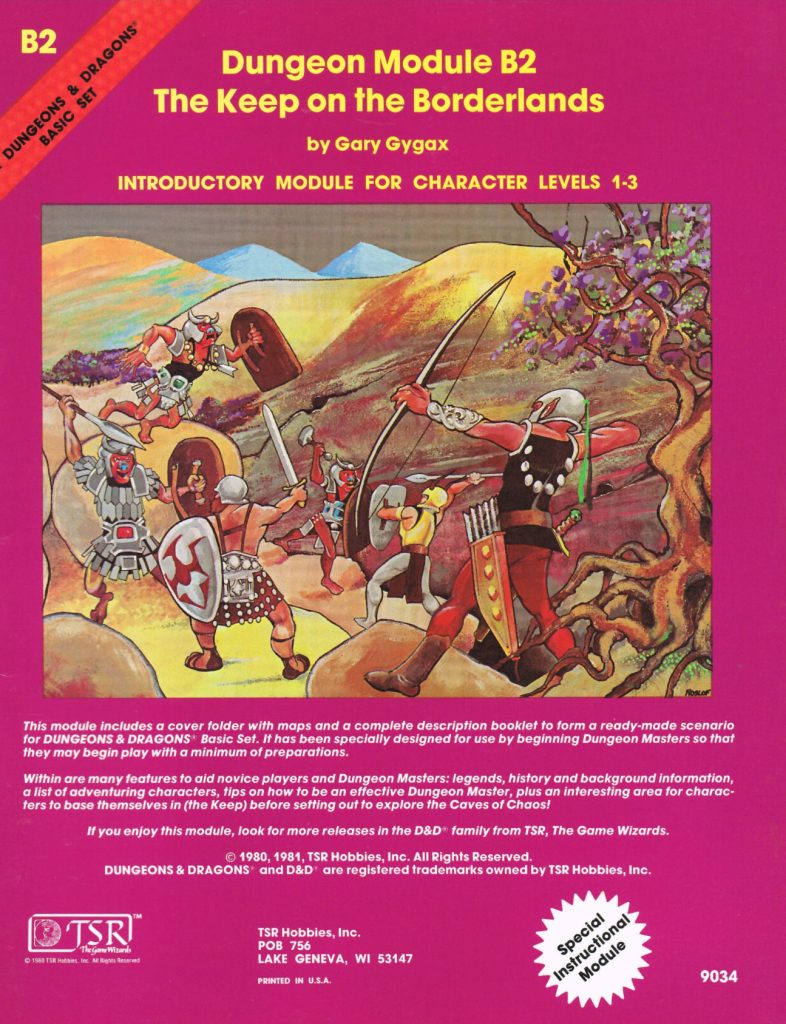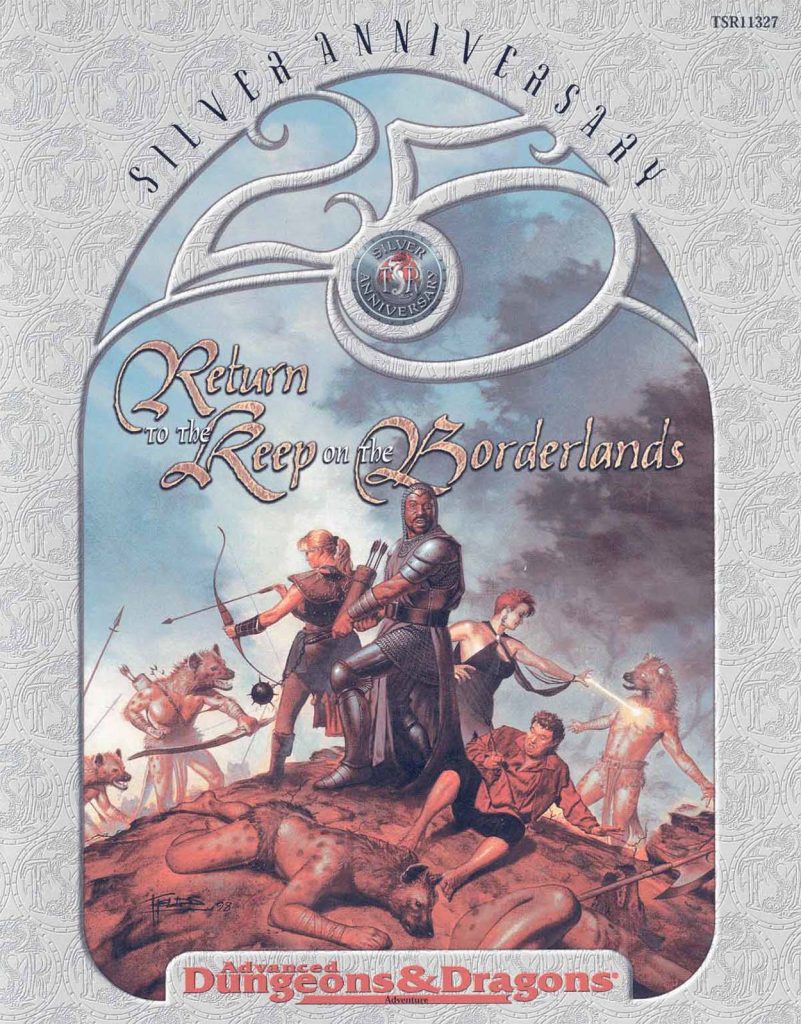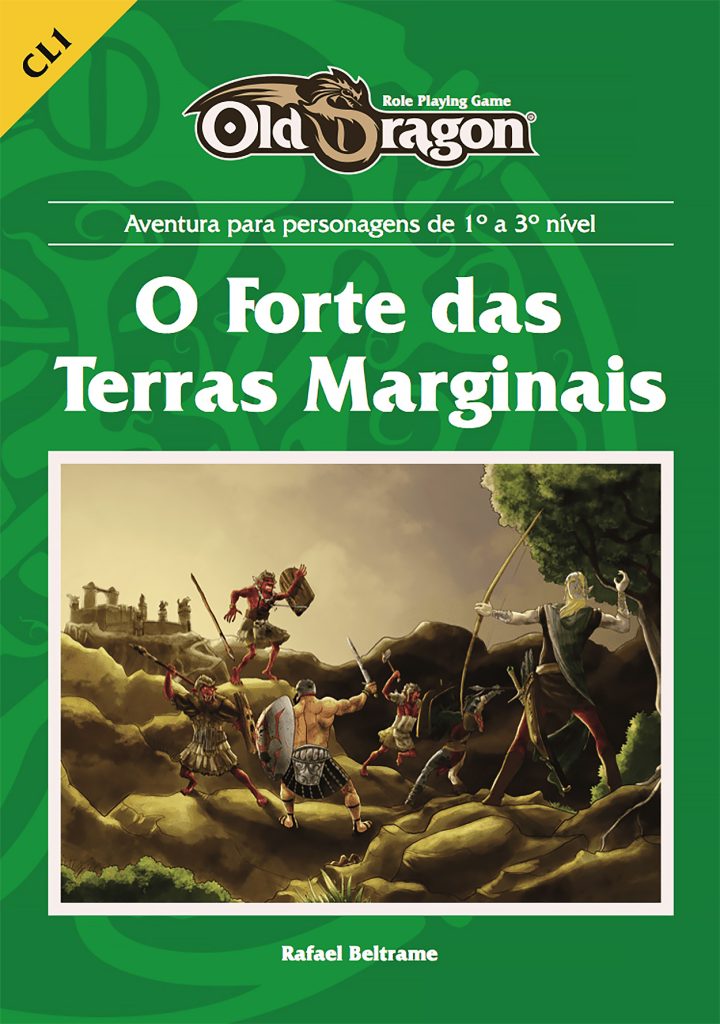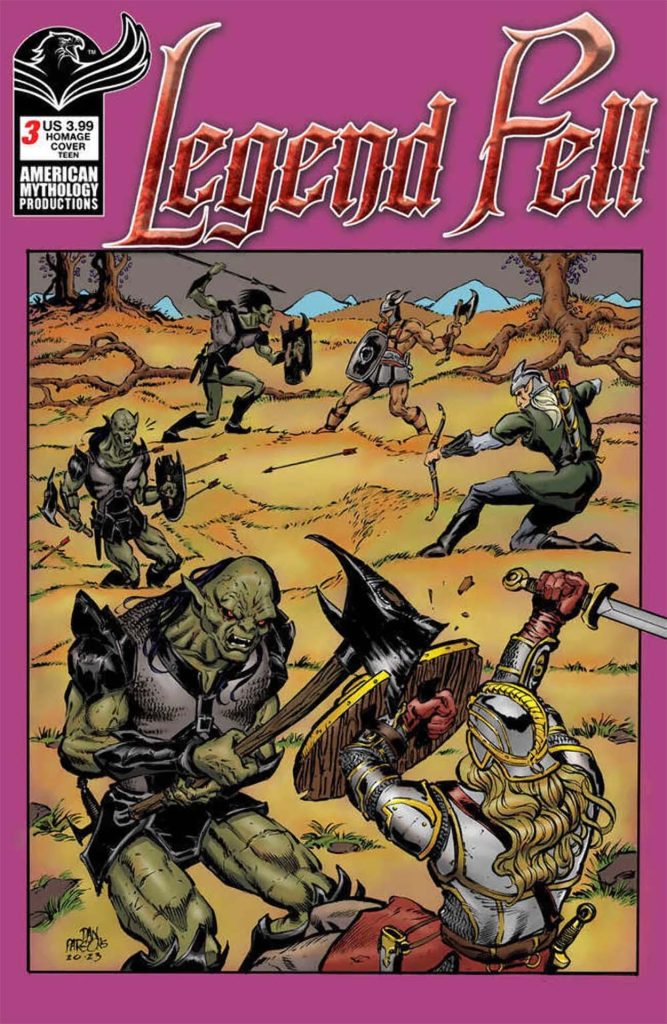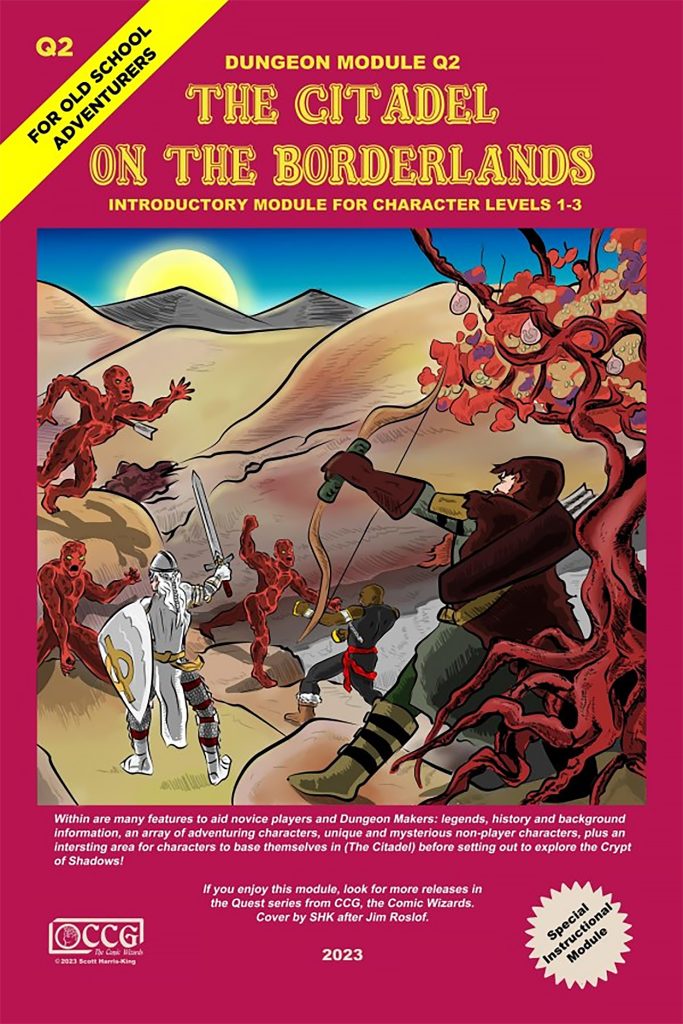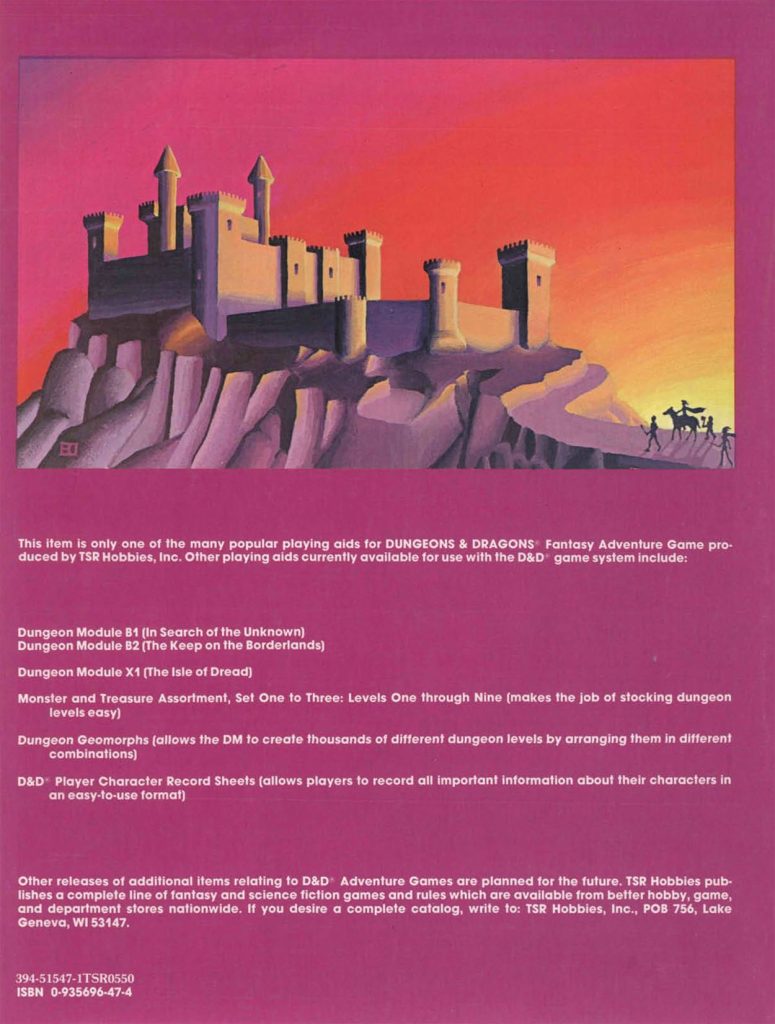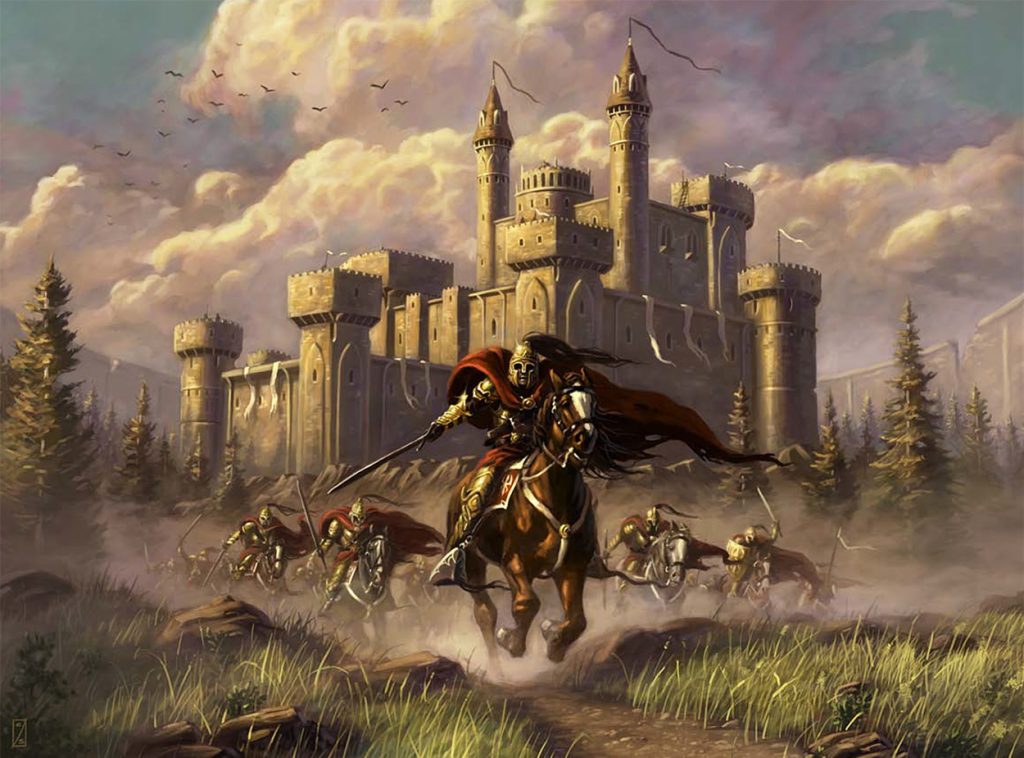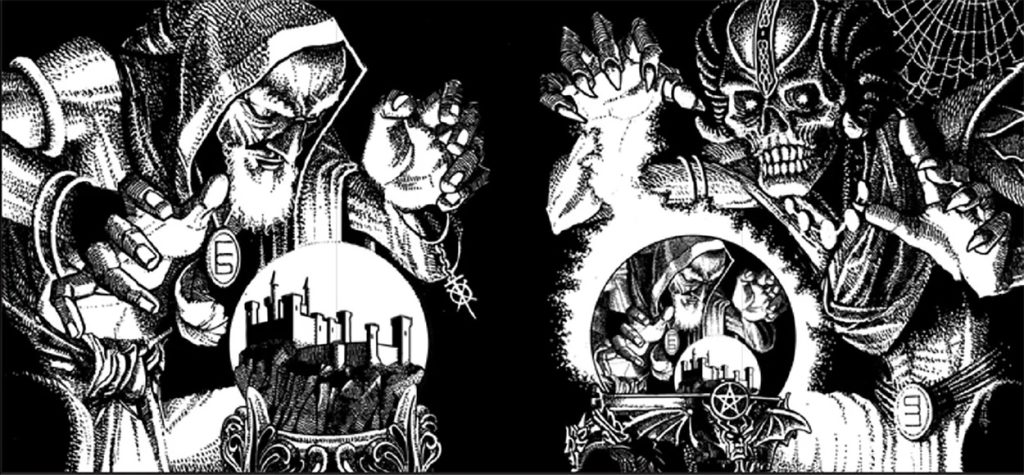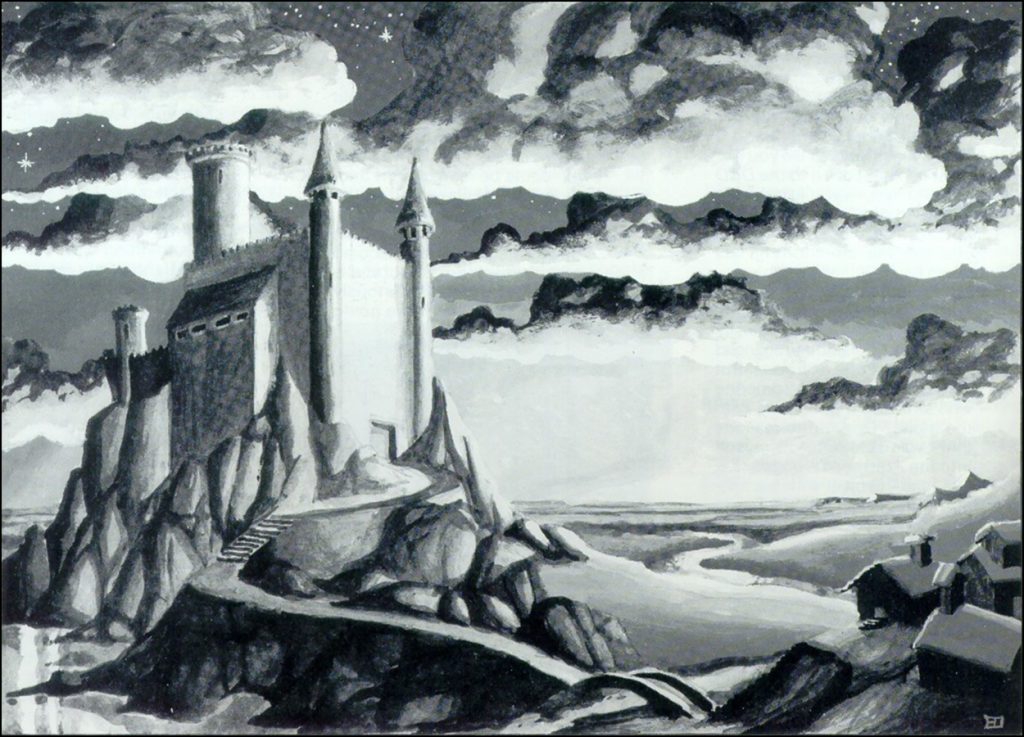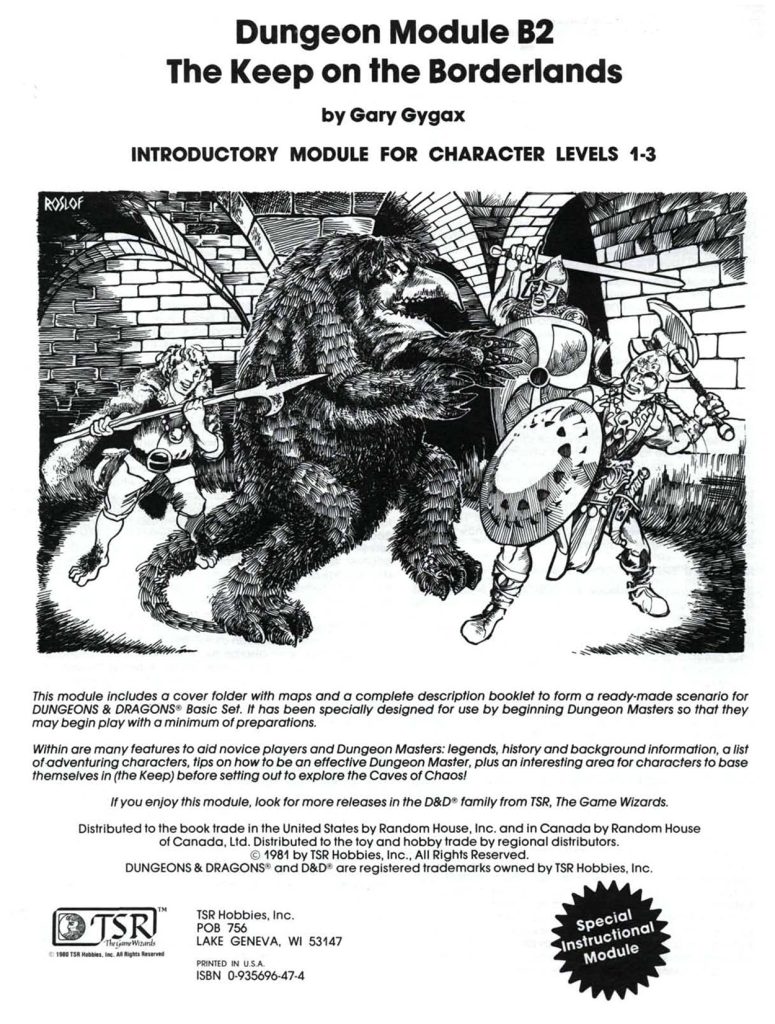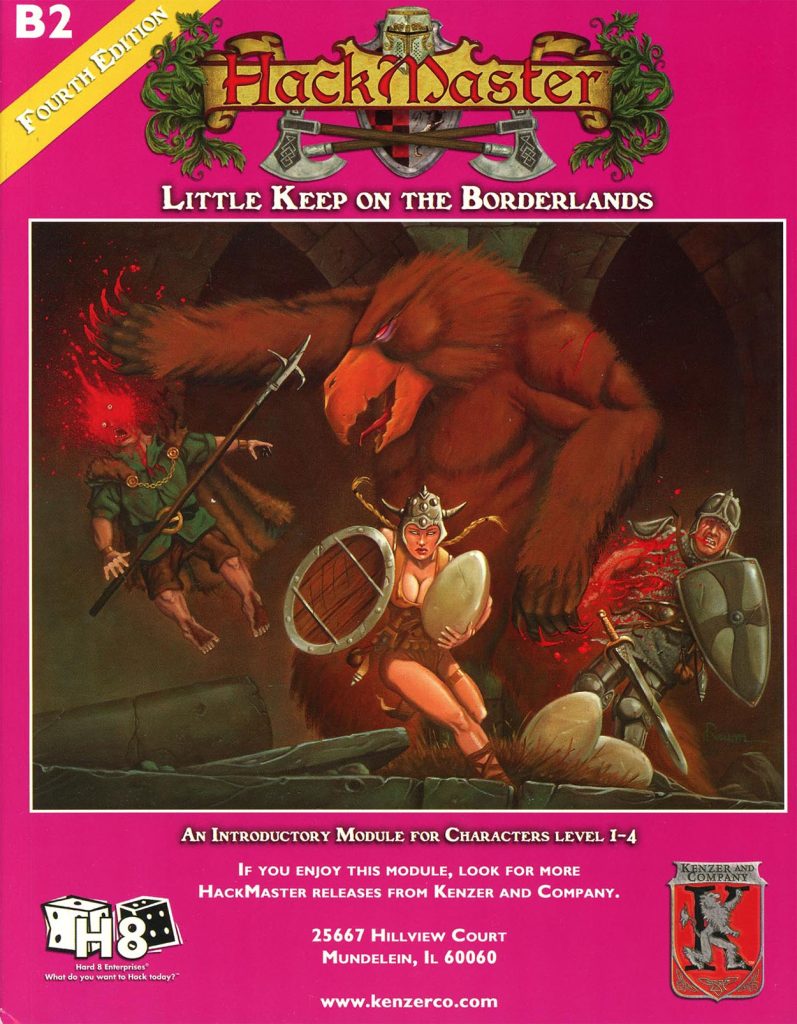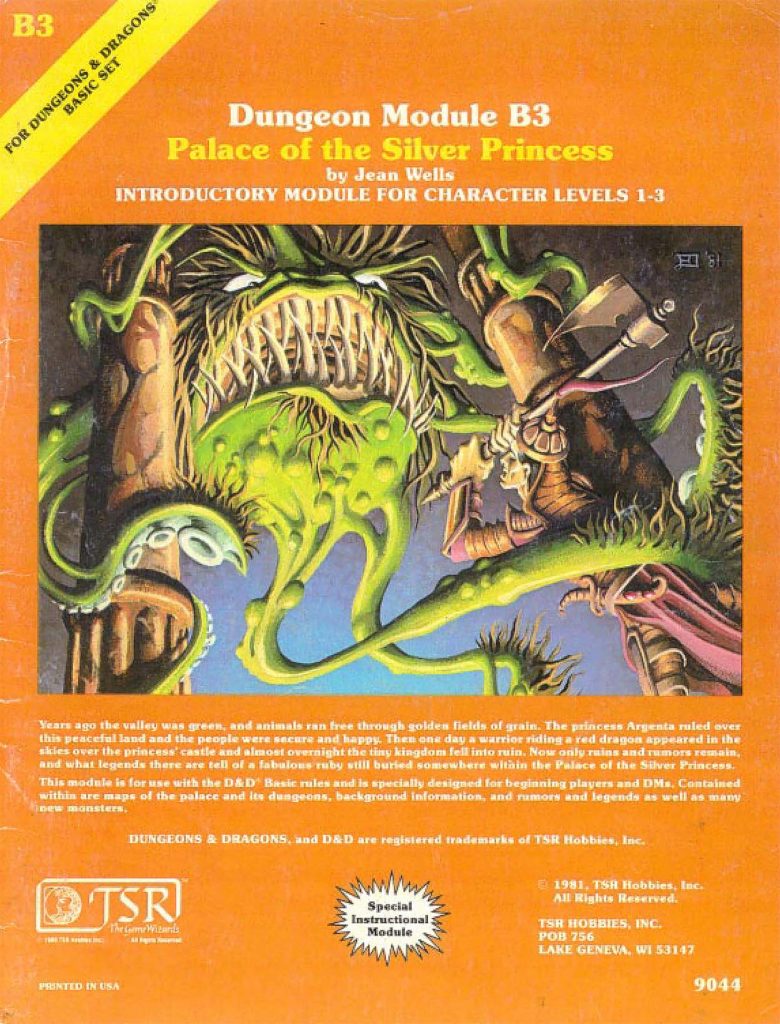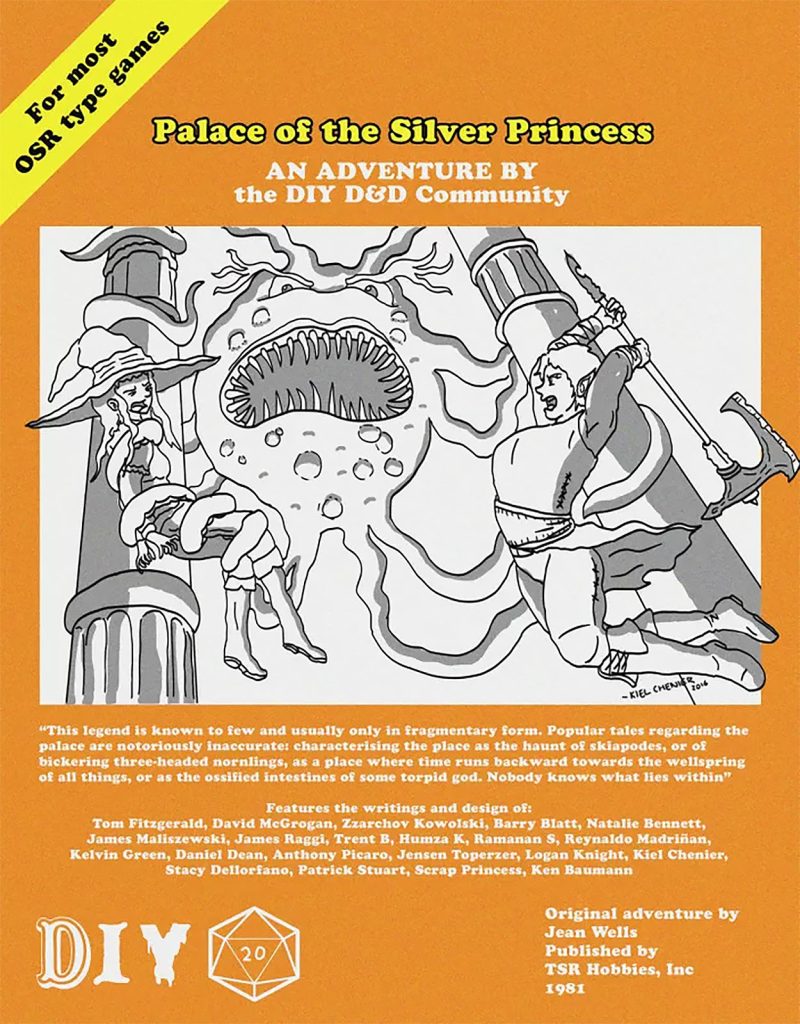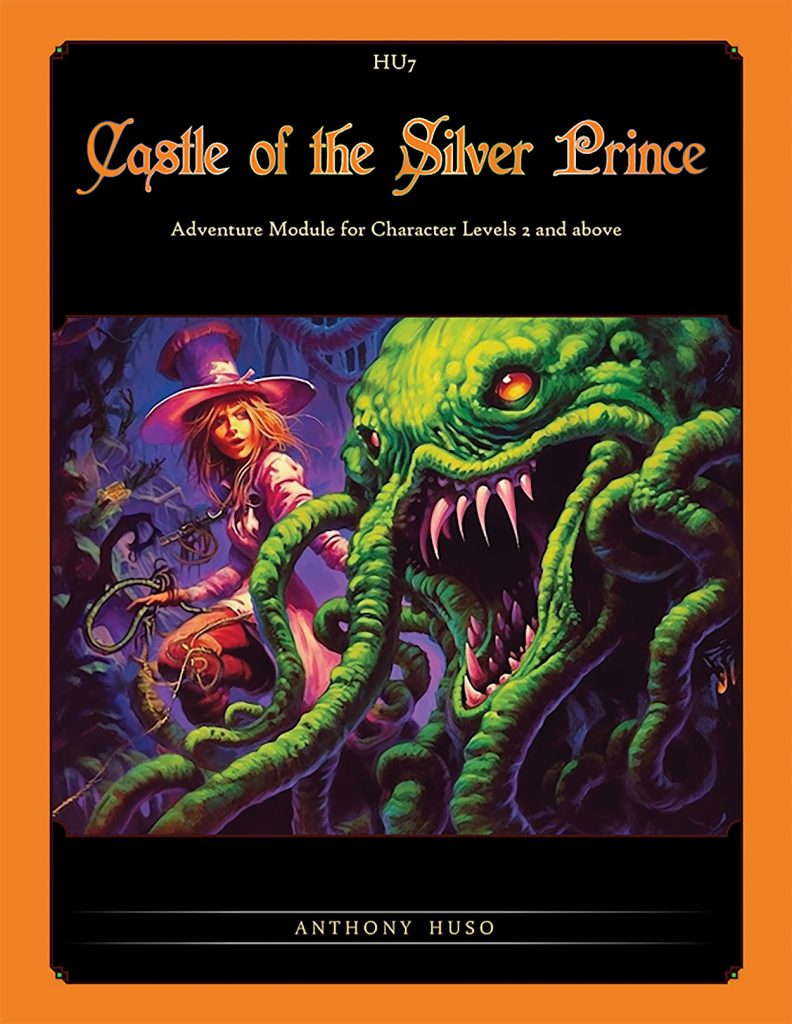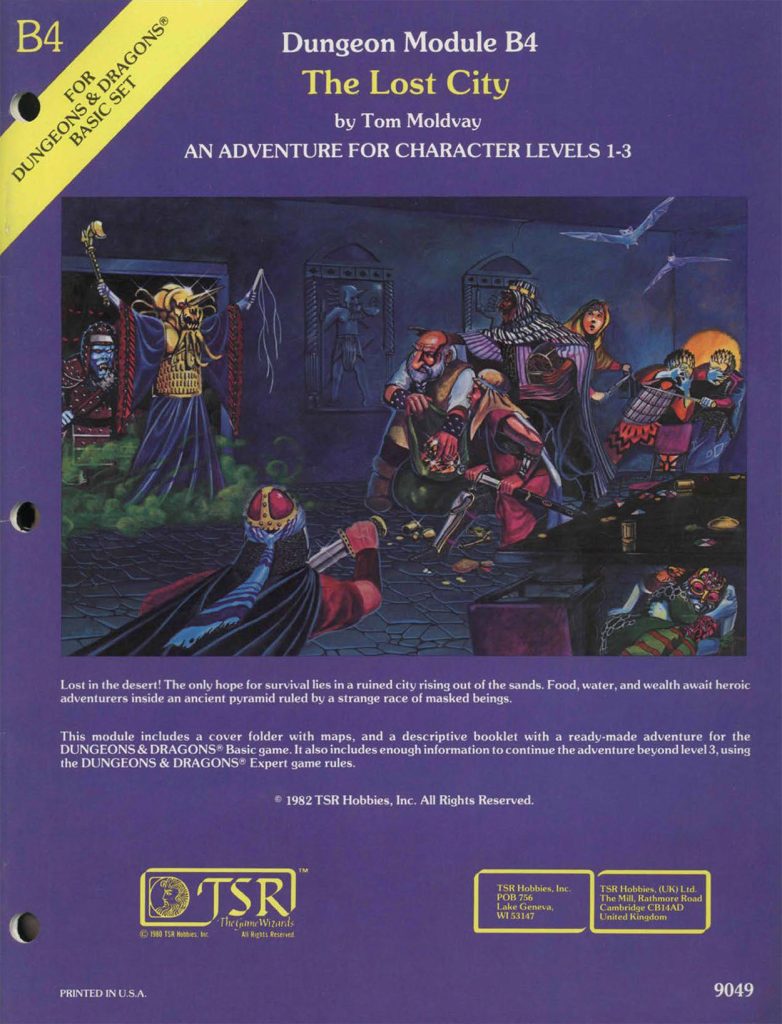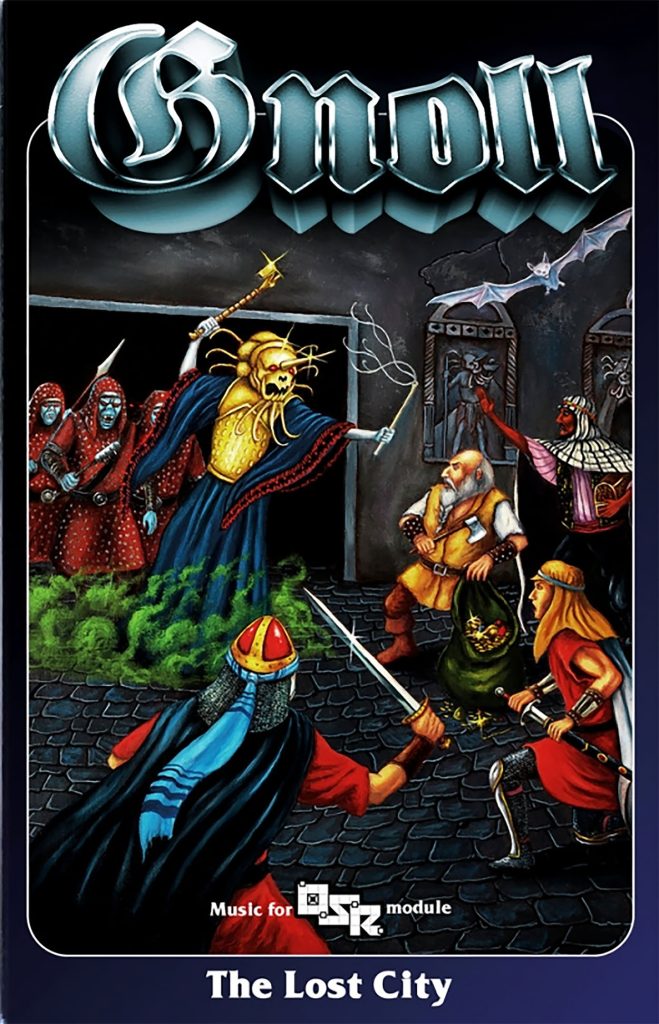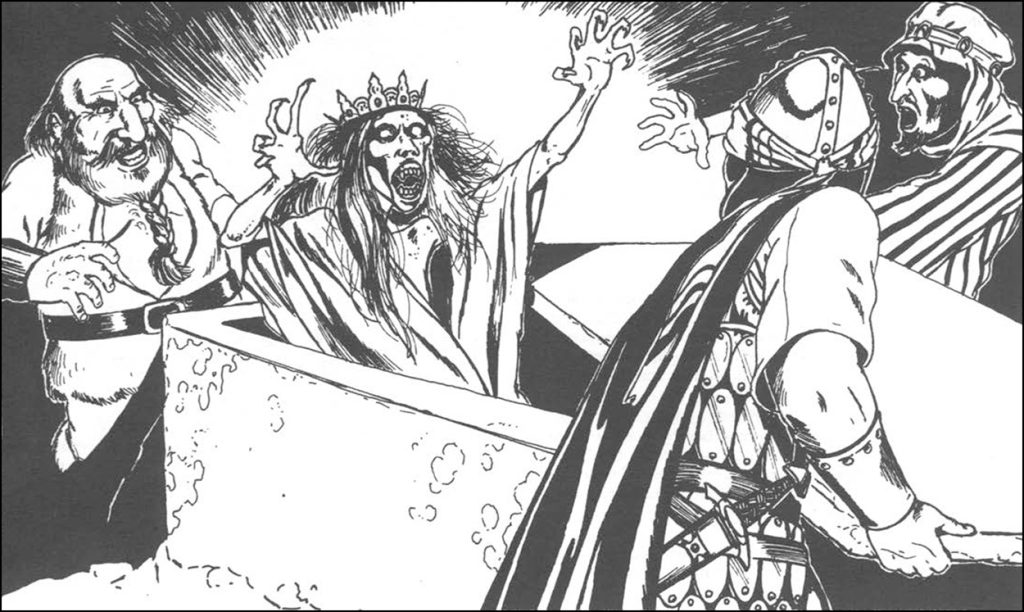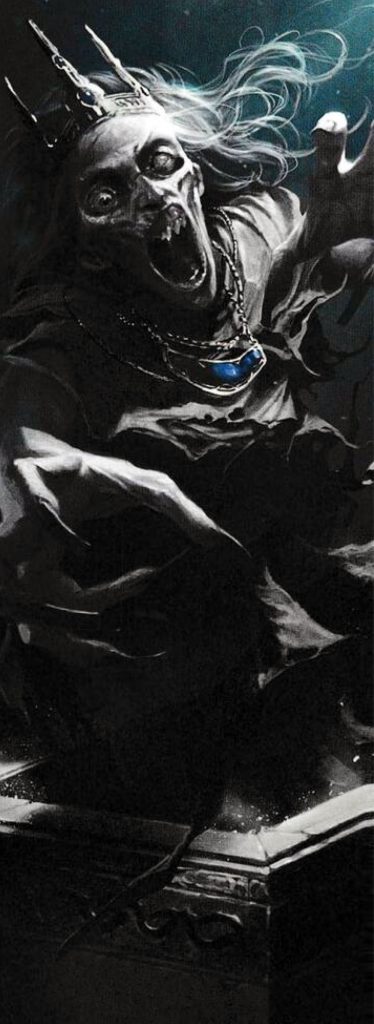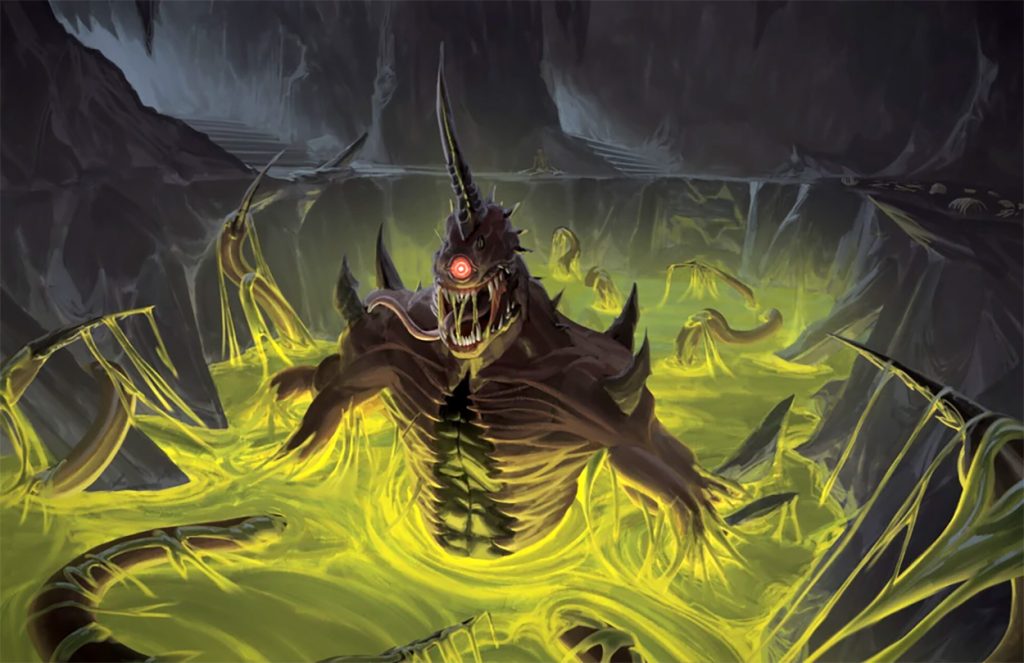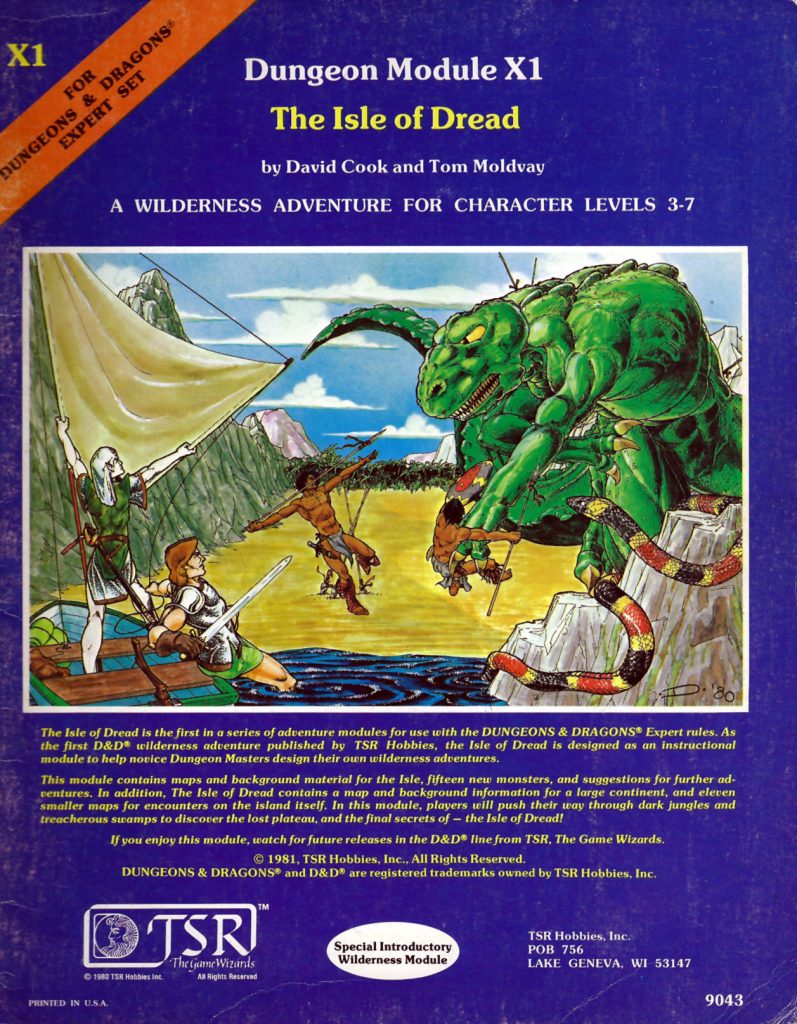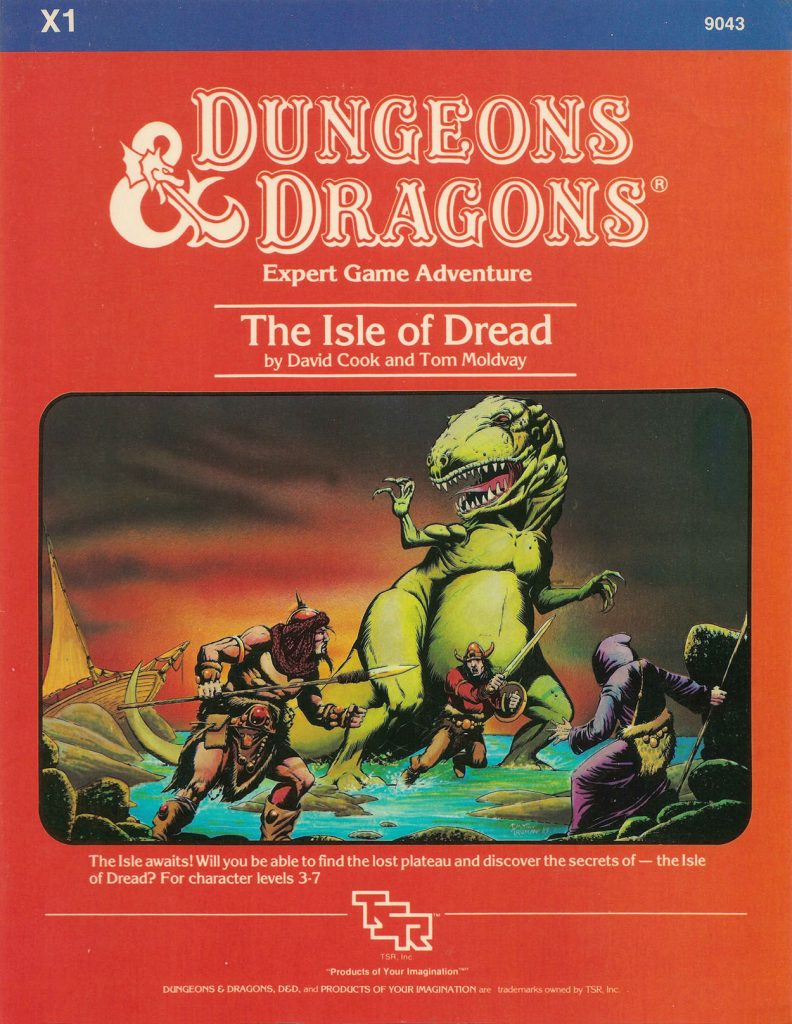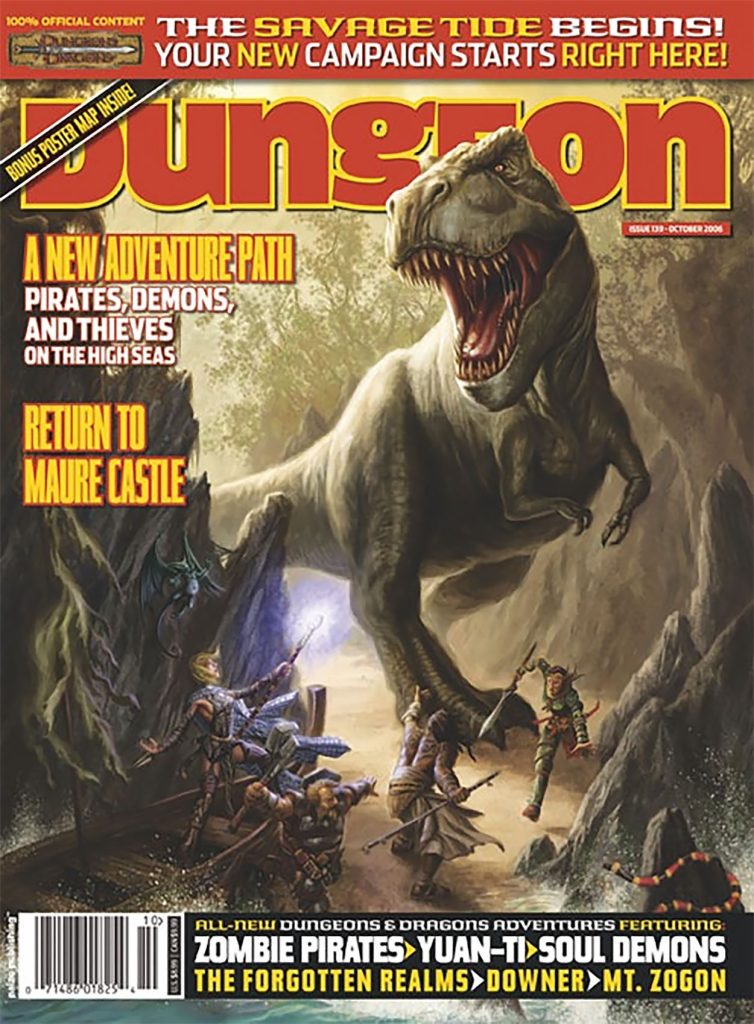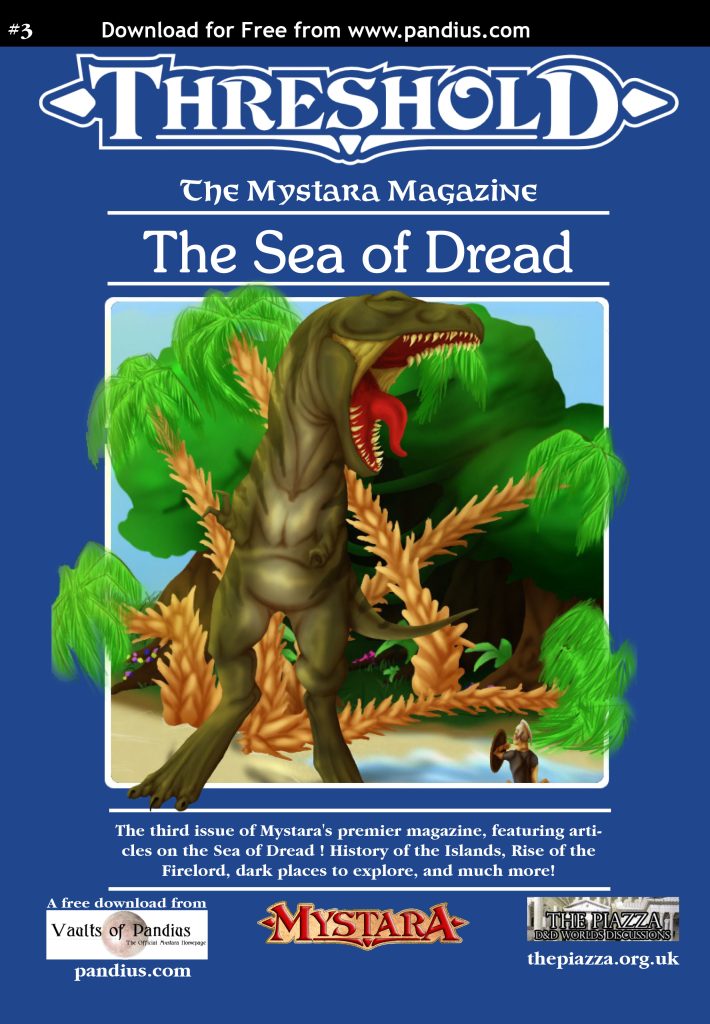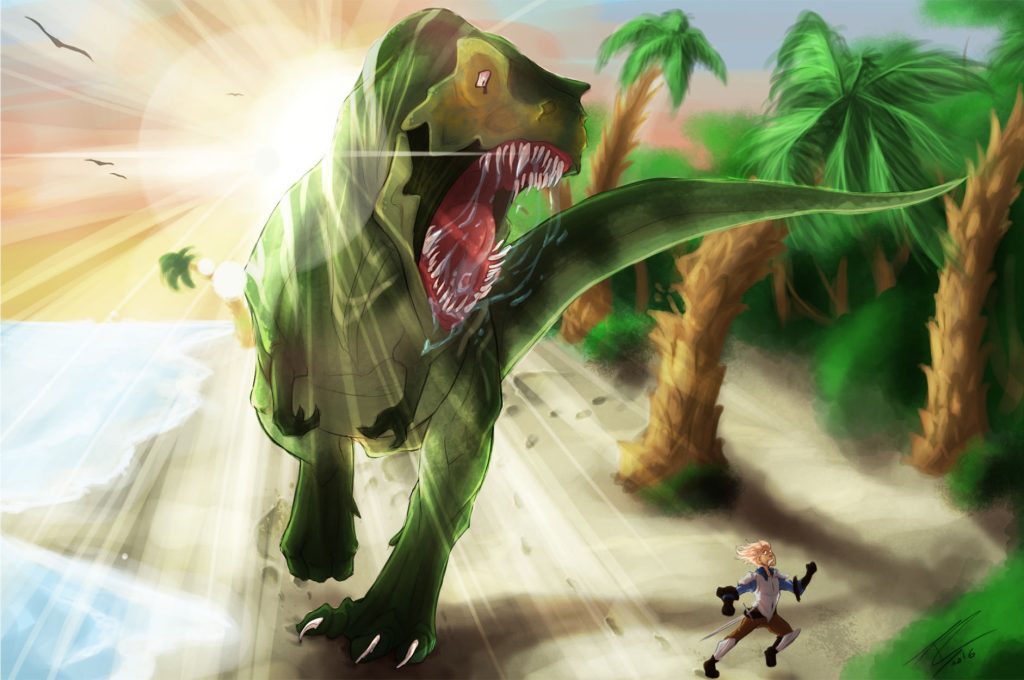The Basic D&D line, with its rulebooks by Holmes (1977), Moldvay (1981), and Mentzer (1983), was many players’ entry to the game, particularly in the early ’80s when D&D was growing exponentially thanks to the James Dallas Egbert III affair. Unsurprisingly, several of those adventures have covers that have been homaged.
Though there are many homages in scattered places, there are two major sources for D&D adventure homages. The first is the Hackmaster 4e line (2001-2008), which was initially produced under license from Wizards of the Coast, allowing Kenzer & Company to produce extensive parodies of classic D&D adventures—complete with parody artwork, which often showed adventurers getting killed a few seconds after one of TSR’s classic covers. The second is a little fantasy comic called Quest (2023-Present), by Scott Harris. Obviously, alternative covers are a source of many parodies, but Harris went a step further and produced alternative RPG-versions of his comics, which have eight pages of Old-School Essentials content (plus an homage cover, most of which have covered adventure modules to date).
AC1: The Shady Dragon Inn (1983)
The “AC” series of Accessories certainly isn’t the best-known BD&D line, in part because it postdates TSR’s 1983 revamp of their trade dress, whereas the majority of the really classic adventures (and therefore their most homaged adventures) tended to fall between 1978 and 1982. Nonetheless, it’s where an alphabetic look at the Basic D&D adventures (and other accessories) begins. AC1: The Shady Dragon Inn (1983) was an interesting product mainly because it debuted the iconic LJN action figures in the D&D game. Scott Harris homaged it for the cover of Quest #4 (2024).
AC2: Combat Shield and Mini-Adventure (1984)
The first GM’s screen for the Basic D&D game, AC2: Combat Shield and Mini-adventure (1984), featured a curious cover, depicting three weird monstrosities by none other than Jeff Easley. Though not exactly a homage, Jeff Easley repeated the format several years later when he produced the covers for MC1: Monstrous Compendium Volume One (1989) and MC2: Monstrous Compendium Volume Two (1989) for AD&D 2e.
In fact, Easley would repeat the pattern for years across 20 Monstrous Compendium releases, including all 15 looseleaf volumes and the first several bound volumes. The Monstrous Manual (1993) offered the first hint of change when it dared to showcase five monsters instead of three. Some later books also included backgrounds instead of the bare chartreuse or white backgrounds of the originals. But the general concept of three or a few more monsters staring out at the readers continued through the end of the line, with Monstrous Compendium Annual Volume Four (1998) and Planescape Monstrous Compendium Appendix III (1998). Not bad for something derived from a little-known accessory cover.
B1: In Search of the Unknown (1978)
Now the “B” Basic adventures probably were the best-known of the Basic D&D lines (except perhaps the Gazetteers, but that’s a much later expansion). They were many players’ entry point to the game, and the first four of them fell into the classic era of 1978-1982. (In fact, B1: In Search of the Unknown was just TSR’s eighth standalone adventure, at the end of a very busy 1978.) Beyond that, In Search of the Unknown was included in the boxed set of the Holmes rules from the fourth through part of the sixth printing, making it that much more wide-spread, albeit in the era before D&D really exploded
The cover of In Search of the Unknown is another one that hasn’t quite been homaged, but there’s considerable variation on the theme of adventurers walking through a huge forest of mushrooms. Dave Trampier drew the original illustration for the cover, but it was rejected! Fortunately for us, Frank Mentzer reprinted Trampier’s original work in The Polyhedron #5 (1982), so it wasn’t lost to the ages. For the actual publication of In Search of the Unknown, Trampier’s original was reworked by Dave Sutherland, primarily to make the adventurers less cartoony, also leading to the unforgettable signature “DIS & DAT”. But that wasn’t the end! The big 1983 branding change of the D&D modules that put the stripe across the top of the covers was actually TSR’s second rebranding: an early one had occurred in 1981, replacing TSR’s original monochrome covers with full-color covers. When that happened, Darlene Pekul provided new cover art for the updated In Search of the Unknown, but kept the general feel of the DIS & DAT version, if not the specifics.
Hackmaster 4e did parody In Search of the Unknown as B1: Quest for the Unknown (2002), but they didn’t homage either classic cover. Instead, the closest Hackmaster variant can be found on the back cover of D1-2: Descent into the Netherdeep (2003). Is it an actual homage? The best clue is the small torch-bearer in the DIS & DAT piece: a similar torch-bearer seems to be exploding in the Netherdeep image! (But otherwise the adventurers look quite different.)
So what did Quest for the Unknown actually homage? Though there are plenty of cover homages in the Hackmaster 4e line, Kenzer & Company felt free to refer to other pieces of art at other times.For Quest for the Unknown, they homaged a picture on page 17 that shows adventurers exploring pools of liquid. One of them is a pool of acid, and the cover shows the inevitable consequences. The classic D&D adventures also included original back cover images, and Hackmaster 4e did the same. However, rather than homaging a piece of art of Quest for the Unknown, Kenzer & Company instead decided to illustrate something that hadn’t previously enjoyed a drawing: the entry to the dungeon, full of the corpses of previous adventurers. The gory back-cover image demonstrates why TSR might have decided not to draw that scene!
B2: The Keep on the Borderlands (1980)
Everything said about the popularity of B1: In Search of the Unknown is doubly true for B2: The Keep on the Borderlands. It was the beginning adventure for a whole generation of munchkins introduced to the D&D game in the early ’80s. It appeared in not just the later editions of the Holmes Basic Set but also the entire run of Moldvay’s B/X Basic Set. As a result, there may have been as many as 1.5 million copies of the adventure printed!
The first homage to Jim Roslof’s cover appeared decades later on Return to the Keep on the Borderlands (1999). But, it’s kind of half-hearted as an homage. Return to Keep on the Borderlands maintains the iconic archer of the original image, as well as a battle against humanoids (here, gnolls rather than hobgoblins), but there’s no attempt to match the layout of the original.
Three homages are much closer: the back cover of Little Keep on the Borderlands (2002) for Hackmaster 4e, O Forte das Terras Marginais (2011) for the Brazilian OSR game Old Dragon, and the RPG edition of Quest #2 (2024). Legend Fell #2 (2023) is just slightly more distant because it twists the perspective around (which was also the case with some of their other homage covers).
The back cover of Keep on the Borderlands has a beautifully colored image of the keep by Erol Otus. It is perhaps even more iconic than Roslof’s front cover. One of the most impressive homages to the Otus image appears in Dungeon #176 (March 2010) as part of the “Chaos Scar” series that revisited the themes of Keep on the Borderlands. It twists Otus’ original image around 90° and also reverses the action, so that we see knights riding down the road from the Keep. Unfortunately, when the artwork was reused for Keep on the Borderlands: A Season of Serpents (2010-2011), the third Encounters season, a combination of a tight crop and a big logo made the keep itself almost invisible. Interior artwork from Old-School Essentials Advanced Fantasy Referee’s Tome (2021) shows another very precise recreation of the Keep, with all the wallets, turrets, and towers in the right places, while Beyond the Borderlands #1 (2020) offers a somewhat simplified view. There will also be a card depicting the Keep in the upcoming Heroes of the Borderlands Starter Set (2025?).
Some fans have pointed out another Otus illustration from The Polyhedron #1 (Summer 1981) as a potentially related piece: it shows a caste, not a keep, but it’s also atop a bluff with a winding road leading toward it.
You’ll note that the front cover of the Hackmaster 4e Little Keep on the Borderlands didn’t replicate either the front or back cover illustration—just like In Search of the Unknown before it. As it happens, every classic D&D module had not two but three pieces of overview artwork: the front cover, the back cover, and a black-and-white frontispiece that appeared on page 1, alongside the title and copyright info. Kenzer & Company chose to homage that frontispiece on their Little Keep on the Borderlands cover, though as usual things have come badly for the adventurers after a few additional seconds have passed.
B3: Palace of the Silver Princess (1981)
Palace of the Silver Princess has always been a legendary adventure because of the withdrawal (and destruction) of the original version by Jean Wells, but it hasn’t seen the numerous recreations of its predecessors … until recently. The DIY Palace of the Silver Princess (2017) is an OSR “remix”, with a new author writing each page, while Castle of the Silver Prince (2023) is a megacastle campaign that mainly references the original’s name. The cover of the DIY adventure and a limited edition cover for Castle of the Silver Prince both homaged (or at least referenced) Erol Otus’ blobular decapus from the original. Notably, they do so with orange borders, which was the color of the recalled version of Palace of the Silver Princess. (After it was rewritten, the new edition was instead green-bordered.)
Over the years, the decapus has occasionally reappeared, with its appearance somewhat consistent with Otus’ original drawing (though usually less horrific); those return visits don’t include other details that would make them true homages. Other appearances of the decapus include AC9: Creature Catalogue (1986), Mystara Monstrous Compendium Appendix (1994), Necromancer Games’ Tome of Horrors (2002), Tricky Owlbear’s Forgotten Foes (2010).
B4: The Lost City (1982)
Jim Holloway’s original cover for the B4: The Lost City is notable because it appears to be the first TSR D&D cover to depict a person of color as an adventurer. So it’s great that it finally received an homage recently, for GNOLL’s The Lost City (2023), an album of techno-synth offered as an unofficial soundtrack for Tom Moldvay’s adventure. GNOLL used the same Hackmaster technique of advancing the timeline, but it feels more effective here because of the matching style and the fact that GNOLL’s image is just a second or two later, almost like a new animated cel.
The module was recently updated in Quests from the Infinite Staircase (2024), but most of the new adventure’s art focused on the factions of the Lost City. One exception is a new look at Queen Zanobis (formerly Queen Zenobia), which clearly references Holloway’s original drawing.
There have also been a few illustrations of Zargon over the years—an elder evil that was first depicted by Zargon somewhat comedically in The Lost City. Again, the artwork in Quests from the Infinite Staircase looks like a purposeful reference, though Zargon can also be found depicted in Elder Evils (2007).
X1: The Isle of Dread (1981)
If B2: The Keep on the Borderlands was the gateway to dungeon delving for many young D&D players in the ’80s, X1: The Isle of Dread was similarly the gateway to the wilderness. It was another adventure with a high print-run, because it was included in both David “Zeb” Cook’s Expert Set (1981) and Frank Mentzer’s Expert Set (1983)—and it fact it was the only standalone adventure included in the entire BECMI series of boxed releases!
The original cover was by Jeff Dee. The adventure was then updated with TSR’s new style before it went into the Mentzer set. A new cover by Timothy Truman on the revised edition clearly referenced the original without being an exact duplicate. Years’ later, Paizo’s Savage Tide adventure path returned to the Isle of Dread, and Paizo celebrated that in Dungeon #139 (October 2006) with another iteration of the cover. For that, artist Dan Scott chose to go back to Dee’s original design, and even included its coral snake if you weren’t sure.
The voluminous Mystaran fanzine Threshold (2013-Present) has twice returned to the cover, once for their own cover to Threshold #3 (March 2014) and once for an interior piece in Threshold #12 (July 2016), but there’s an interesting twist to these pieces. Editor John Calvin asked his daughter to draw the illustration, but didn’t show her the original cover, just giving her “a vague description about a knight fighting a T-Rex on the shores of a jungle island.” He then repeated the exercise two years later, resulting in two illustrations that reference but don’t quite homage the original.
There were more than 100 adventures, accessories, and other modules published for the Basic D&D line. However, most homages tend to focus on the earliest, best-known publications, not the entire catalog. But let me know if you know of others, whether the original books are included here or not! Also see “Homaging the D&D Classics II: The BD&D Rules“ for the actual rulebook homages.
Versioning Notes & Credits
v1.0.0. Initial version. Thanks to Sionainn Mac Innéirghe (Travis Henry) for pointing out the relationship between AC2 and the Monstrous Compendiums. Thanks to @fromthemorgue.bsky.social for puzzling out the Hackmaster homages of B1.

